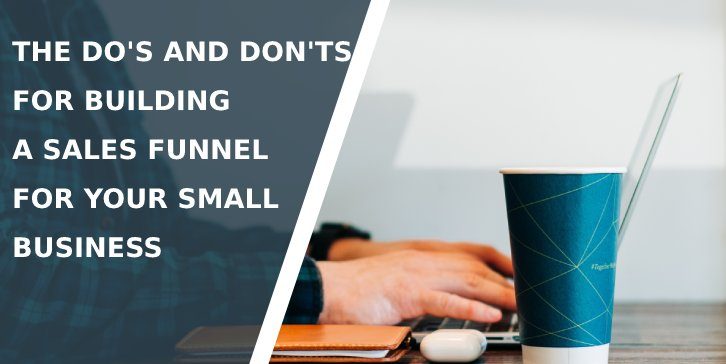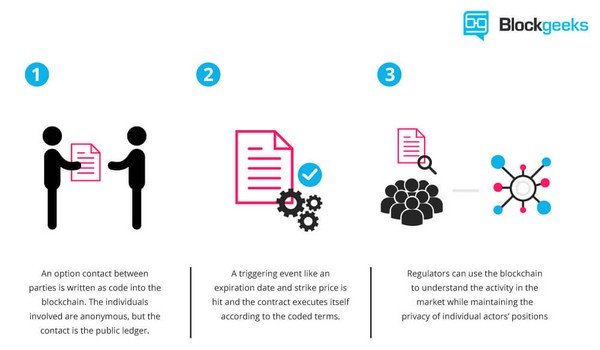The goal of every small business is to get as many people as possible into your sales funnel and then guide them through it until they make a purchase.
A sales funnel, in simple words, is the process that your potential customer goes through as they move from being aware of your product or service to becoming a paying customer. The entire point of a sales funnel is to nurture leads until they’re ready to make a purchase.
There is a method to creating a sales funnel for your small business, and we’re here to walk you through it step-by-step.
The Do’s
1. Learn the stages of the sales funnel
Before diving into a sales funnel, you need to learn the marketing funnel. The sales funnel starts where the marketing funnel ends, so your small business needs to ace the marketing funnel first. A funnel consists of six stages: awareness, interest, consideration, intent, evaluation, and purchase.
The first four stages lie in the domain of the marketing team. The last two are part of the sales team’s job.

2. Awareness
A person sees an ad, reads a blog post, or hears about your business from a friend. It is when your potential customer becomes aware of your product or service.
At this stage:
- Customers usually do not know much about you or what you have to offer.
- Businesses should know their goals and what they want to achieve.
3. Interest
Once the potential customers become aware of you, they learn more about what your business offers to them and how it can help them. They may visit your website, read more blog posts, or follow you on social media.
Potential customers will usually sign up for your newsletter. At this stage, businesses need to engage the potential users with soft offers.
4. Consideration
At this stage, they’re starting to compare you to other options and decide if you’re the right fit for them. They may request a proposal, sign up for a free trial, or attend a webinar.
5. Intent
If they decide that you are the right fit for them, at this stage, they’re ready to buy, but they may still have some questions or concerns. They may reach out to customer support, read reviews, or compare prices.
6. Evaluation
At this point, your potential customer has decided to buy, and they’re just waiting to talk to their boss, get approval from their team, or save up enough money to purchase the product or service from your business.
7. Purchase
The potential customer is ready to buy from you! Congratulations, you’ve made a sale. Once you know your target audience and the different funnel stages, think about what content you need to create.
Promote content for each stage of the funnel
The type of content that needs to be put out there depends on the stage of the buyer’s journey. Let’s divide the funnel into three phases:
1. Top-of-the-Funnel Content
The content here targets people who could potentially benefit from the product or service (awareness and interest phases of the funnel).
For instance, a blog post about ‘how to keep your skin clear’ is written for people interested in skincare who do not suffer from any skin conditions.
The methods used to market content in this stage are through email marketing, for which you would need to have a list of email addresses. Once you learn how to build an email list, devise a campaign and get started. Personalize your emails and include a call-to-action (CTA) in every email.
2. Middle-of-the-Funnel Content
This content is written for people in the consideration and intent phase of the customer journey. For instance, a product page on an e-commerce site would fall into this category. Here you can convince your customers to buy your products and explain why they would benefit from them.
For example, a blog post about ‘the best acne treatments is written for people who suffer from acne and are looking for ways to treat it. If you are writing a blog post, add an ‘ask’ such as: sign up or purchase.
Push out content in this stage through retargeting ads for which you need to have a pixel installed on your website and through social media ads.
3. Bottom-of-the-Funnel Content
This type of content is written for a person who has shown intent that he will make a purchase, so the content here can focus on addressing all the possible questions or ambiguity that person might have regarding the product or service preventing them from buying.
Typically, this type of content is written for people who have already had contact with your company and are ready to buy your products, so the keywords that you need to use in your content are: “how-to,” “guide,” “discount,” “ways to,” “sale,” “where to buy.”
In this stage, use PR outreach, guest blogging, and content syndication to inform your potential customers.
Finally, don’t forget to analyze and optimize your funnel regularly.
Focus on growth
Once your target audience successfully reaches the bottom of the funnel and becomes your customer, do the following:
Activation
Engage your customers with complex offers after they have made their first purchase. Activation also accounts for inactive or returning customers.
Retention
Perform all activities that keep users coming back. Retain your customers by delivering value, providing excellent customer service, and building a relationship with their customers.
Revenue
Implement new pricing structures and even test new business models. Encourage users to buy more products or services from you (upselling) or complementary products/services (cross-selling).
Referral
Invite more people to benefit from your product. Get customers to refer your business to their friends and family. An effective referral program gives existing customers an incentive to refer new customers.
The goal is to move them down the funnel and turn them into loyal, repeat customers.
The Dont’s

Don’t build a sales funnel that’s too complex.
To keep things simple while building the sales funnel, use the SMART framework:
S – Specific (defining a particular goal): This could be a keyword you target for a specific campaign. A keyword tool like Google’s Keyword Planner or Word Tracker can come handy here.
M – Measurable (setting a baseline to track changes): You need to set realistic targets for traffic, leads, and sales. This could be keeping track of the number of people who visit our website using Google Analytics etc.
A – Attainable (setting targets that you can achieve relatively quickly): Depending on your business, you might want to get a certain number of sales or generate a certain amount of leads within a given time frame.
R – Relevant (something your target audience can relate to): You need to ensure that the targets you set are relevant to your business goals. For example, if you’re aiming to increase brand awareness, setting a target for the number of sales might not be applicable. Similarly, the content you push out needs to be helpful for the reader.
T – Time-based (set goals for a certain period, such as a quarter): This is where you put a deadline for yourself or your team to achieve the desired results.
Keep an eye on your goals to see how well your funnel is performing.
Don’t try to sell everything to everyone.
When you’re first starting, it’s tempting to try and sell everything to everyone. However, this is not an effective way to build a sales funnel.
It would help if you answered the following questions:
- Who do you want to reach out to?
- What are their needs, wants, and interests?
You need to focus on a specific target audience and segment them into different buyer personas.
Don’t skip testing
Test different versions of your content and see what works best. Try other headlines, calls to action, and images to see what gets the best results.
Don’t neglect your existing customers.
Your existing customers are the best source of revenue for your small business. Ensure to nurture your relationships with them and provide them with the best possible service.
Sending them special offers and discounts is a great way to keep them engaged.
Don’t give up
Building a process takes time, effort, and patience, so remember to persist! With time and effort, your business can achieve the desired results!
Conclusion
Sales can help you increase leads and sales for your small business.
Remember, the goal is to nurture your leads until they’re ready to buy. Your content should provide value and help them move from one stage of the sales funnel to the next.
Analyze which stages of the funnel are performing well and which could use some improvement. By promoting your content and analyzing your funnel regularly, you can ensure that your sales funnel performing at its best.





Comments are closed.